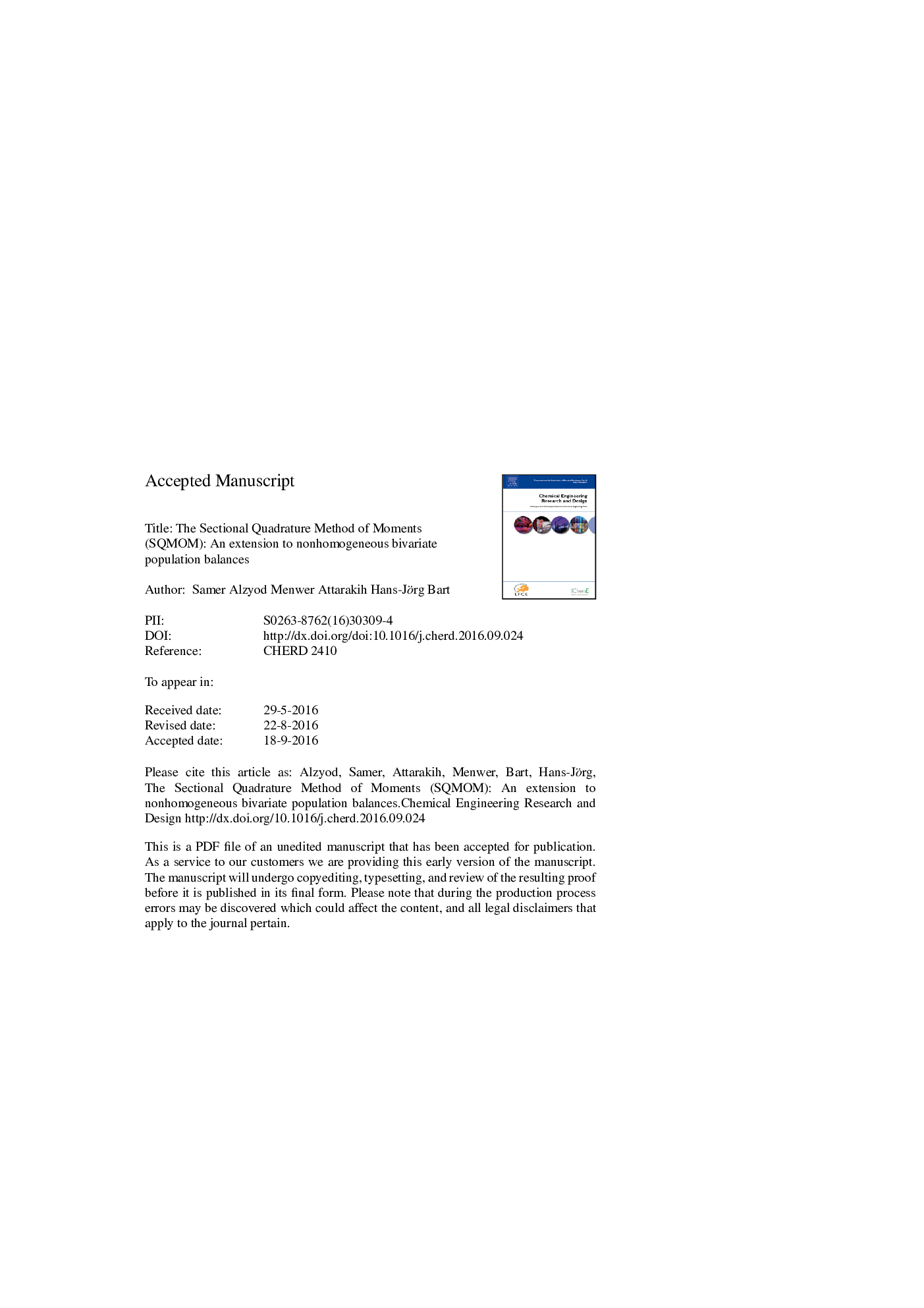| Article ID | Journal | Published Year | Pages | File Type |
|---|---|---|---|---|
| 4987441 | Chemical Engineering Research and Design | 2016 | 14 Pages |
Abstract
The Sectional Quadrature Method Of Moments (SQMOM) is extended to solve the bivariate nonhomogeneous Population Balance Equation (PBE) along the spatial domain. The resulting unclosed integral terms are approximated using Gauss-Christoffel quadrature rule, where the required quadrature nodes and weights are calculated analytically using the Two-Equal Weight Quadrature (TEqWQ) formula (Attarakih, M., Drumm, C., Bart, H.-J., 2009. Solution of the population balance equation using the Sectional Quadrature Method of Moments (SQMOM). Chem. Eng. Sci. 64, 742-752). The resulting set of moment equations is dominant by convection due to the large spatial spontaneous gradients. To take this into account, a finite volume scheme with flux vector splitting technique is designed and coupled with the standard MATLAB ordinary differential equation solvers. To speed up the system approach to steady state and to enforce numerical stability, the present numerical scheme is fifth order accurate in time while it is first order accurate in space. As a numerical test, the model prediction is validated using PPBLab software, where the extended fixed pivot technique with a multi-sectional grid (w.r.t droplet diameter) is used. In addition to this, the SQMOM is experimentally validated using the published data for water-toluene and water-acetone-toluene chemical test systems, where the ability of reconstructing the droplet size distribution is successfully examined. The required number of sections to discretize the internal coordinates (droplet diameter and solute concentration) is found to be 15, while the required number of spatial numerical cells is found to be 50 for accurate steady state pilot plant RDC liquid-liquid extraction column simulation. In this regard, the SQMOM is able to follow the extraction column behavior during column scale-up, where two column diameters are investigated (RDC DN80 and DN150). The SQMOM is found flexible to predict the column hydrodynamics as well as the mass transfer profiles as compared to the published experimental data using only the first four low-order moment equations.
Keywords
Related Topics
Physical Sciences and Engineering
Chemical Engineering
Filtration and Separation
Authors
Samer Alzyod, Menwer Attarakih, Hans-Jörg Bart,
